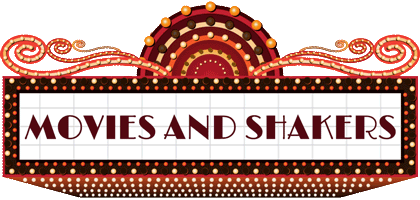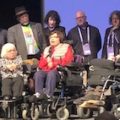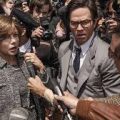
Director Rob Christopher takes a walk down memory lane taking from the semi-autobiographical works of author Barry Gifford from his Roy stories. The film paints a picture of Gifford’s memories surrounded by colorful characters and places in the gritty city of Chicago in the 1950’s and 60’s.
Gifford frankly admits that some of it happened and some of it did not.
David Lynch is a big fan of Gifford’s work and has used pieces of his work in his movies: Wild at Heart, The Roy Stories, and even Lost Highway from the writer’s works about growing up in Chicago.” Lynch describes Gifford’s influence calling him “a killer f***king writer… I really love that world and the things that can happen there.”
Fans of author Gifford’s books and essays, Willem Dafoe, Matt Dillon and Lili Taylor, read passages over an incredible amount of vintage clips edited by Marianna Milhorat that capture the scene of that era in the city. Original jazz music by Jason Adasiewicz backs up the black and white visuals. Heavy on bass, trumpet and vibraphone, jazz tempos aptly set the pulse of that time.



Christopher has also added animated simple black and white drawings animated by Lilli Carre and Kevin Eskew in between actual video and photos of the places Roy remembers. In all, it tells the story of the boy’s isolated childhood. He was pretty much on his own and would go to see 2 or 3 movies a day to keep occupied, which, he says, inspired him to be a writer.
Dafoe, Dillion and Taylor tell Roy’s story in his own words from his writings naming the places in Chicago that played an important part in his life. He was born in the Seneca Hotel, named after the Maitre D’ in the restaurant at the Belden Stratford. His mother was a Texas beauty Queen 20 years younger than his father. He was involved with the mo, became a pharmacologist, and used his Drug and Liquor store as a front. Roy’s father didn’t speak to him till he was 5 years old, about the time his parents divorced. His father marries twice and his mother, at least 3 times.
But his mother was all-important to Roy. Her memory prompted him to write about their life and relationship in the context of Chicago at that time.A very poignant remembrance of his mother and attitudes at that time in Chicago is when Roy remembers his mother going to get something in a drug store. She is refused service because she’s so tanned the pharmacist refuses to serve her. He accused her of being a Negro. Only when Roy shows up to see what’s taking so long that the Pharmacist determines she’s White. She is outraged, not because of the accusation, but because she should have been served whether she was Negro or not. Roy makes a point in the film that neither of his parents were at all racist.



There is so much history showing Chicago buildings and restaurants of the past that are no longer there. It’s nostalgic. So were the politics. Bribery of police is shown in several clips to have been pretty much accepted. There is remarkable video of Mayor Daley’s reign including when he was sworn in. You had to be savvy and tough to live in Chicago. Even tough enough to deal with the weather. After a stay with his Mom in Cuba, winter in Chicago blew him away. “Hell was cold, not hot.”
Dafoe, Dillon and Taylor bring life to Gifford’s writing backed by a mesmerizing collection of quick clips and animation for the writer’s love letter to Roy’s World.
Arrenem Films 75 minutes Documentary









